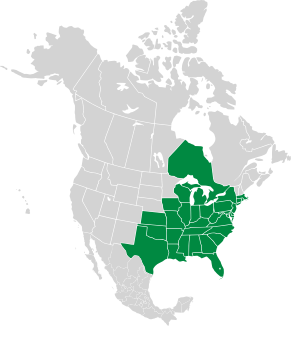Cleome arborea hort.
Cleome hasslerana Chodat, orth. var.
Cleome houtteana auct. non Schltdl.
Cleome pungens auct. non Willd.
Cleome spinosa auct. non Jacq.
Tarenaya hassleriana (Chodat) Iltis

|
Cleome hassleriana Chod. Spider flower, spider plant, pink queen
Spider flower is native to Argentina, Paraguay, Uruguay, and southeastern Brazil, and sometimes escapes from gardens to become naturalized in the United States. These striking flowers have been cultivated into many variants. Plants: Plants are erect annuals, up to 5′ (1.5 m) in height, with round, slightly ridged stems. Leaves: Arranged in a spiral pattern around the stem. Leaves are palmate—shaped like fingers on a hand—with 5 or 7 leaflets. Each leaflet is narrowly oval, toothed, finely hairy, up to 4½″ (12 cm) × 1½″ (4 cm), on petioles (leaf stems) up to 6″ (15 cm) long. Flowers: In compact racemes at stem tips. Purple, pink, or white, strongly scented, with four petals and six long, graceful stamens. Flowers appear from June to frost. Fruits: Capsules up to 6″ (15 cm) × ⅛″ (3 mm). These are somewhat similar: |
6/22/2014 · Beaver Brook Conservation Area, Hollis, New Hampshire · ≈ 7 × 11″ (18 × 28 cm) 6/22/2014 · Beaver Brook Conservation Area, Hollis, New Hampshire · ≈ 7 × 11″ (18 × 28 cm) |
||||||||||||||||||||||||||||
|
| |||||||||||||||||||||||||||||
Polanisia dodecandra ssp. trachysperma |
You are here Cleome hassleriana |
Cleome serrulata |
|||||||||||||||||||||||||||
|---|---|---|---|---|---|---|---|---|---|---|---|---|---|---|---|---|---|---|---|---|---|---|---|---|---|---|---|---|---|
| Common Name |  |
 |
 |
||||||||||||||||||||||||||
| Plant | 1-2′ (30-60 cm) tall. The stem is usually unbranched, and green to reddish purple. Both the stem and leaves are covered with sticky hairs. The plant has a strong odor. | Erect annuals, up to 5′ (1.5 m) in height, with round, slightly ridged stems. | A single erect stem is 4-59″ (10-150 cm) in height. | ||||||||||||||||||||||||||
| Flowers | Clusters of flowers are about 3″ (7.6 cm) around and up to 8″ (20 cm) high. Each flower has four white notched petals up to ⅜″ (9.5 mm) long, with prominent red stamens that are more than twice the length of the petals. Flowers appear from July to September. | In compact racemes at stem tips. Purple, pink, or white, strongly scented, with four petals and six long, graceful stamens. Flowers appear from June to frost. | Flowerheads are a spray of lavendar or pink flowers, each with four petals and four darker sepals. Green-tipped purplish stamens poke out from each flower. Almost looks like an exploding firework! Flowers appear from May to September. | ||||||||||||||||||||||||||
| Leaves | Near the base of the plant, leaves are in groups of three. Further up the stem, they are single, alternate, elliptic, and nearly sessile. The upper leaves remain roughly constant in size along the stem, at up to 1½″ (3.8 cm) × ½″ (1.3 cm). Leaf tips may be blunt or pointed. | Arranged in a spiral pattern around the stem. Leaves are palmate—shaped like fingers on a hand—with 5 or 7 leaflets. Each leaflet is narrowly oval, toothed, finely hairy, up to 4½″ (12 cm) × 1½″ (4 cm), on petioles (leaf stems) up to 6″ (15 cm) long. | Arranged spirally. Each leaf has three leaflets (trifoliate), often with tiny teeth. Each leaflet is ⅜-2½″ (1-7 cm) long. | ||||||||||||||||||||||||||
| Fruit | Yellowish green pods, on reddish stems emerging almost horizontally from the main stem, are angled upward. They remind me of a cross between a pea pod and a milkweed pod, though they are not related to either of these. Like the rest of the plant, the fruits are covered with sticky hairs. | Capsules up to 6″ (15 cm) × ⅛″ (3 mm). | Capsules similar to beanpods are 1-3″ (2.5-7.6 cm) long. Each contains several seeds. | ||||||||||||||||||||||||||
| Range/ Zones |
|
|
|
||||||||||||||||||||||||||
| Habitats | They prefer full sun and moderately moist to dry, gravelly or sandy soil. They are found on river banks, streamsides, roadsides, and other disturbed sites. | Gardens and occasional garden escapes. | Along roadsides, in disturbed soils, in meadows, or in rangelands. They prefer dryer climates at elevations of 3000-9500′ (914-2895 m). | ||||||||||||||||||||||||||
| Type | Wild | Escaped cultivar | Wild | ||||||||||||||||||||||||||
Online References:
References:
Clemants, Steven; Gracie, Carol, Wildflowers in the Field and Forest, Oxford University Press, 2006, p. 92
7/23/2014 · Beaver Brook Conservation Area, Hollis, New Hampshire · ≈ 6 × 9″ (16 × 23 cm) 
9/29/2016 · Henry E. Cowdrey Nature Center, Lunenberg, Massachusetts 
9/29/2016 · Henry E. Cowdrey Nature Center, Lunenberg, Massachusetts 
9/29/2016 · Henry E. Cowdrey Nature Center, Lunenberg, Massachusetts 
9/29/2016 · Henry E. Cowdrey Nature Center, Lunenberg, Massachusetts 
9/29/2016 · Henry E. Cowdrey Nature Center, Lunenberg, Massachusetts 
9/29/2016 · Henry E. Cowdrey Nature Center, Lunenberg, Massachusetts 
Cleome arborea hort.
Cleome hasslerana Chodat, orth. var.
Cleome houtteana auct. non Schltdl.
Cleome pungens auct. non Willd.
Cleome spinosa auct. non Jacq.
Tarenaya hassleriana (Chodat) Iltis
Cleome hassleriana description by Thomas H. Kent, last updated 5 Oct 2021.
© FloraFinder.org. All rights reserved.
9/26/2016 · Henry E. Cowdrey Nature Center, Lunenberg, Massachusetts 
9/29/2016 · Henry E. Cowdrey Nature Center, Lunenberg, Massachusetts 
7/23/2014 · Beaver Brook Conservation Area, Hollis, New Hampshire · ≈ 12 × 8″ (31 × 21 cm) 
9/29/2016 · Henry E. Cowdrey Nature Center, Lunenberg, Massachusetts 
9/29/2016 · Henry E. Cowdrey Nature Center, Lunenberg, Massachusetts 
9/29/2016 · Henry E. Cowdrey Nature Center, Lunenberg, Massachusetts 
9/29/2016 · Henry E. Cowdrey Nature Center, Lunenberg, Massachusetts 
Range: Zones 2-11:
